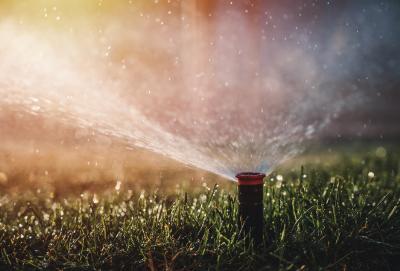Not all insects are pests. In fact, there are a number of critters that are beneficial to your garden and landscape.
If we let insects do their jobs, they can help out in the following ways:
- Preying on pest insects - spiders are predators of insects and so are some types of beetles, flies, and lacewings.
- Reducing pest insects - small wasps lay their eggs inside insects or their eggs, which helps to reduce the pest population.
- Pollinating plants - native bees, honey bees, wasps, flies, moths, butterflies, and some beetles transfer pollen from plant to plant.
- Processing garden material - a number of insects are responsible for breaking down decaying material in your garden.
The trick to attracting beneficial insects is to provide a habitat that interests them and makes them want to stay. When they are given a welcoming habitat, these insects will earn their keep.
How to attract beneficial life to your landscape:
- Include a variety of native plants to provide a variety of food like sources.
- Plant a border of companion plants rich in pollen and nectar.
- Plant ornamental grasses to provide shelter and nesting sites.
- Use a hedge as a windbreak—beneficial insects dehydrate easily.
- Provide a bird bath or water source with stones, so insects can land and drink without drowning.
- Keep your lawn and other plants healthy. Providing the appropriate amounts of nutrients, water, sunlight, and regular upkeep creates a healthy ecosystem.
Pollinators are an essential part of our ecosystem and are needed for food production and the regeneration of our beautiful landscapes.
How to help pollinators:
- Choose a variety of garden plants that are abundant in pollen and nectar, such as catmint, daisies, lavender, and black-eyed Susans.
- Provide water and nesting sites to enhance pollinator habitat.
- Avoid pesticides such as insecticides, herbicides, and fungicides.
Friends that prey on our foes:
- Hoverflies - predators of aphids, thrips and other plant-sucking insects.
- Parasitic Wasps - control whiteflies, aphids, and some caterpillar pests.
- Lady-bird Beetles (Ladybug) - eat aphids, spider mites, mealy bugs, and scale insects.
- Damselflies & Dragonflies - eat mosquitoes.
- Lacewings - lacewing larvae eat aphids, whiteflies, leaf miners, mites, thrips, and scale insects.
- Beetles - some are pests, but most are great pest fighters.
- Nematodes - these microscopic worms feed on the larvae and grubs of many pests.
- Spiders - help keep insect populations in balance.
- Bats - can eat up to 1,000 insects in a night.
- Birds - consume insect eggs, beetles, and grubs.
- Toads - can consume 3,000 grubs, slugs, beetles, and other insects in one month.



